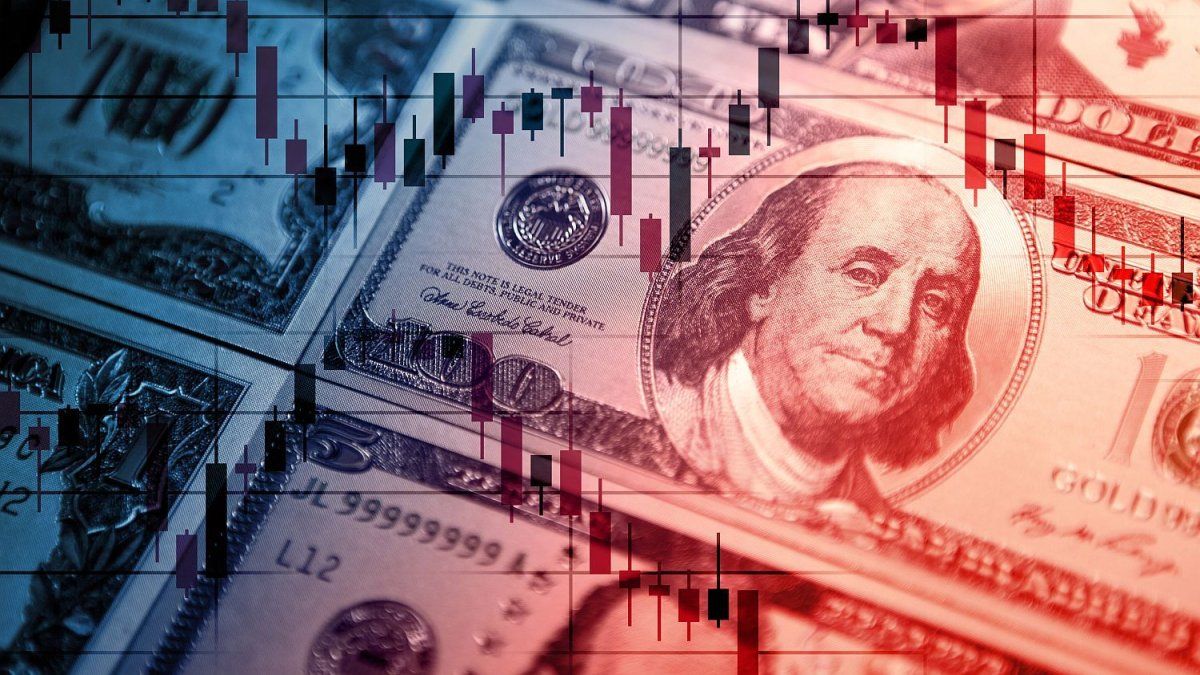That is why the consultants share a first conclusion of the libertarian year: There was no social chaos, there was no political trial and there was no hyperinflation..
What form does the end of the recession take?
This does not exempt the Government from high cost that generated such stability in terms of economic recessionwhich between one year and another led to the industry and the construction will fall to two digitsreaching year-on-year drops of 21.2% and 42.2% respectively in March.
Likewise, the recovery from the blow that the economy suffered in the first quarter began to be registered from July onwardswhere the positive trend in the results of the EMAE (skipping the minimum monthly drop in September of 0.016%).
In that sense, the latest data from October (0.6% month-on-month and 0.7% year-on-year) caused the Government to not only more than ratify the end of the recession, but also that it had occurred just as they had anticipated: in the form of “V”.
The consultant Vector doubt the anatomy of recovery. The latest report, by the director Eduardo Heckerspeaks of a “V with bad handwriting” and emphasizes that a good part of the productive dynamics observed during this year “has been underestimated by the statistical rebound of the agricultural sectorafter a historic drought.”
Despite the microclimate produced by a moderate performance, the reality is that 2024 accumulates a drop in activity on the order of 2.7% compared to 2023and “it deepens to 4.9% if we remove the previously mentioned agricultural bias,” Vectorial relativizes.
Salaries and consumption, the main debts in an election year
In that context, real salary lost -7% while average inflation was +236%. “Bad results for ‘main-street’”adds PxQ. It is clear that the public sector registers a greater fall, of 19.5%as well as pensions, which lost between -6% and -10%, or the minimum wage (SMVM), whose deterioration was 32%.
The loss of purchasing power is not overlooked in the latest lNDEC data. In October, sales in supermarkets dragged an annual decrease of -17.8% and wholesalers of -22.8%.
In turn, for the same month, heterogeneity is observed in the results of both types of establishments, with a decrease of 1.7% in supermarkets and an increase of 2.1% in wholesalers.
Finally, on this point, Vectorial warns that the drop in supermarket consumption “It could be even higher.” of not financing through credit card, since in October the 46.3% of sales were made under this means of payment, against a 38.3% in October 2023 and 45.3% in September of this year.
“A trend is set towards greater household debt to reach consumption levels even below those recorded last year,” highlights the consultancy.
What for Vectorial today is presented as an alarm signal, PxQ takes it as key resource on the path of economic recovery. In other words: if the Government achieved a nominal reduction from a lower depreciation of the exchange rate, that would translate into a lowering of the rate and stretching of terms of financing, which would lead to a decrease in the fee-income ratio, “increasing the possibilities of family debt”.
For now, it is clear that the heterogeneity in income recoverys turned out to be a constant in 2024 and marks one of the main doubts towards 2025.
Dollar: after the jump in payments for imports, doubts increase about the Government’s exchange rate policy
Another conclusion sealed among analysts is that sustain the exchange rate policy in step with the flexibility of imports It will be a challenge that will depend largely on the sources of foreign exchange income that the Government hopes to consolidate.
After the Christmas holidays, the BCRA surprised with a sale of US$ 599 million due to importers’ access to the MULC. Not only was it the biggest negative result in the Milei era, but also since the end of October 2019when US$812 million were sold.
The large sale is added to that of Monday US$179 millionso the BCRA got rid of US$776 million in just two days.
What is behind these figures? According to Personal Investment Portfolio (PPI), the specific demand of one automotive (Toyota) marked a jump in the demand for foreign currency. In turn, on Thursday the thirty-day period was met for those importers who They waited for the cessation of payment on account of the PAIS tax (95% of the tax), which became effective on 11/25.
“It will be key to see how private demand evolves in the coming days, since will be decisive for the dynamics of the official market in a context in which private supply remains relatively stable,” says PPI.
Isolated case or change in dynamics? The same question that the consulting firm asks stings the ears of the main financial analysts. Although the concern does not deserve distrust on the part of the market, at least for now, it is important to trace the dollar accumulation channels so as not to set off the alarms prematurely.
In that sense, PxQ maintains that the weakness of the dollar accumulation scheme was seen contained by change control and weighed by him laundering successwhich “changed the macro dynamics.”
In this way, the income from US$22 billion to the local financial system, plus the magnitude that the carry trade operation acquired, they achieved the entry of foreign currency into the BCRA coffers and, according to PxQ, the guarantee that the Government cancels its external obligations in 2025.
However, the main factor by which the model can be sustained is neither palpable nor quantifiable: it is trust. “As long as confidence in the local financial system is maintained, the scheme works”, maintains the Emmanuel Alvarez Agis consultant.
For that same reason, The ups and downs of an election year should avoid the possibility of a run by the whitewasherswhich destabilizes the path that Santiago Bausili traces in the monetary entity. “An event that usually takes place in Argentina in general election years, not midterm elections,” PxQ clarifies, however.
Where are the dollars?
With the warnings raised, the following and final question is asked by default: Where will the dollars come from to support the exchange rate policy?
For PxQ, the scheme is transforming into one in which the current account deficit is financed with capital inflows from the private sector, “which decides to increase its debt in dollars, in a context in which local companies are very little leveraged and have good prospects in the tradable sector.”
Likewise, the answer becomes more complex if we take into account that Milei assured that 2025 will be the year of exit from the stocks. In the absence of exchange controls, the inflow of private capital “tends to appreciate the currency and weaken the current account”. However, PxQ maintains that this dynamic generates two types of shock absorbers.
The first has to do with the capital inflow destined to finance investments in the exportable sectorwhich would cause the current private external debt to be paid with the future increase in exports.
At the same time, if the BCRA manages to maintain a reserve accumulation policystrengthening the external position of the monetary authority would allow “the scheme is perceived as sustainable and, at the same time, expands the capacity for intervention in the exchange market in the face of disruptive events.”
External risk: Lula Da Silva and Donald Trump case
Meanwhile, the devaluation of more than 24% of the Brazilian real and the low cut in the FED interest rate in the United States It does not discriminate against Argentina in terms of impact, although it is true that the stocks keep it away from the harmful effects that this combo generates in emerging economies.
According to the consultant IEBdespite the exchange rate tension of the last rounds and the bad month that emerging debt has been having, The local debt was oblivious to this entire context and hard dollar debt advances another 0.8% on average this week and accumulates 2.5% so far this month.
For their part, bonds with local legislation rise to a greater extent and the legislation spread tends to zero, so “the market stopped demanding an additional return on securities under Argentine law”.
On the side of the peso bondsthe consulting firm whose directors are Norberto Sosa and Andrés Nóbilehighlights the fixed rate showed “some weakness” this week attributable to “dismantling positions that were carrying” while dollar linked bonds “were in demand again due to the widening of the gap.”
Source: Ambito
David William is a talented author who has made a name for himself in the world of writing. He is a professional author who writes on a wide range of topics, from general interest to opinion news. David is currently working as a writer at 24 hours worlds where he brings his unique perspective and in-depth research to his articles, making them both informative and engaging.




